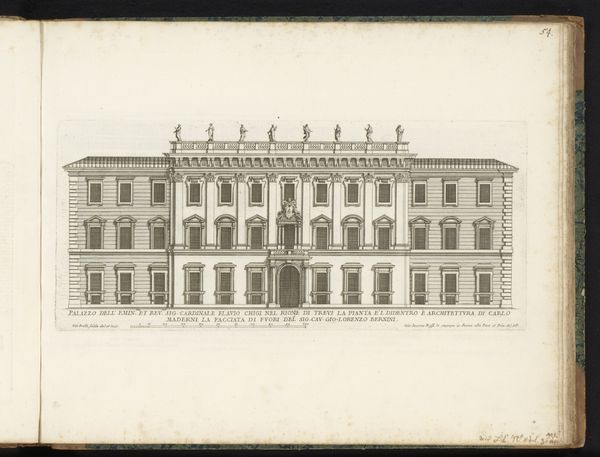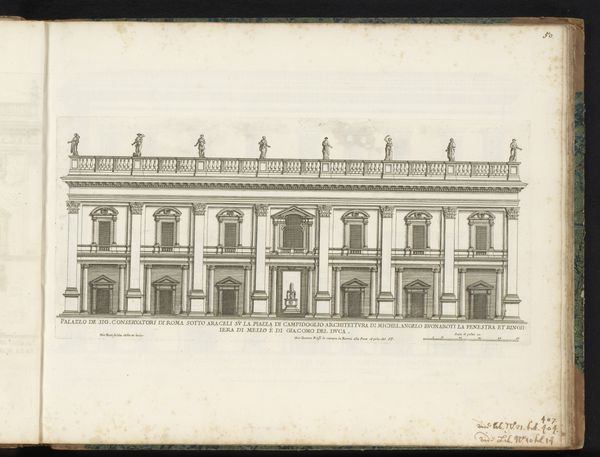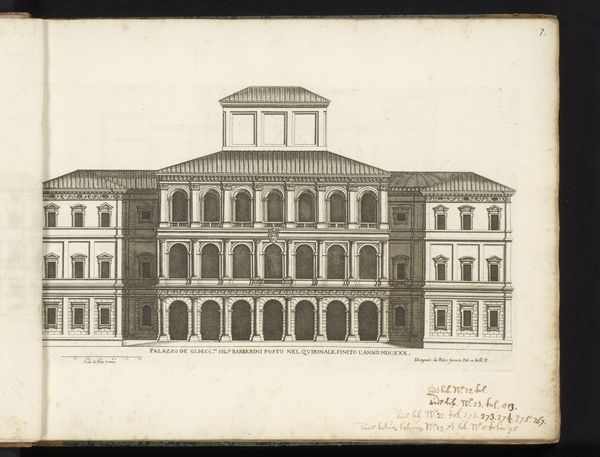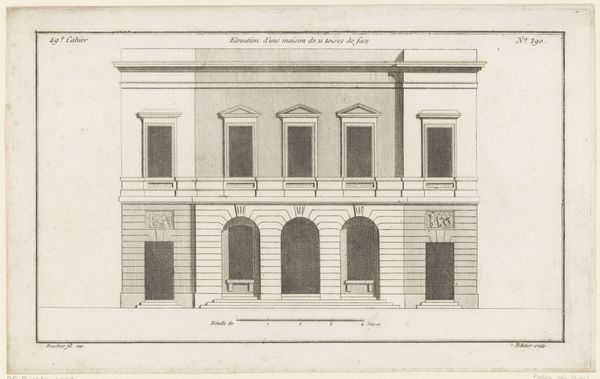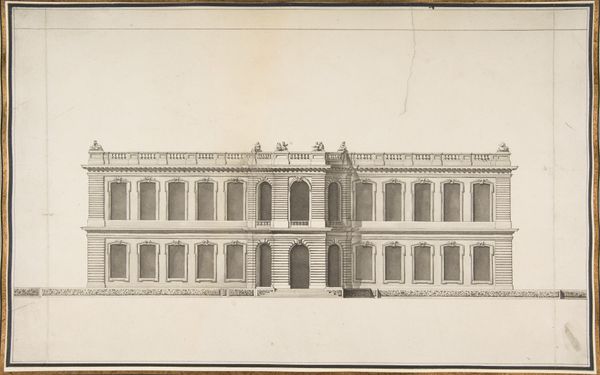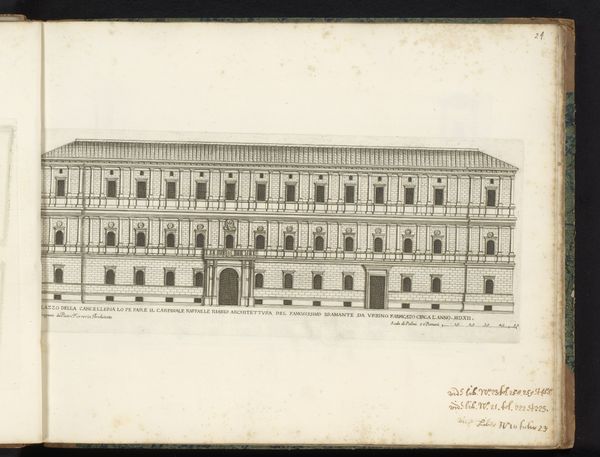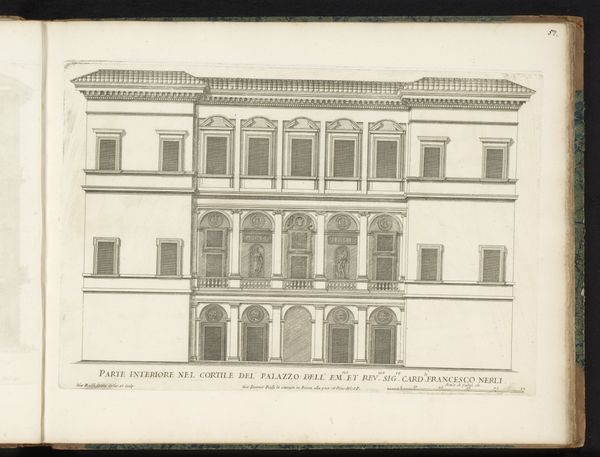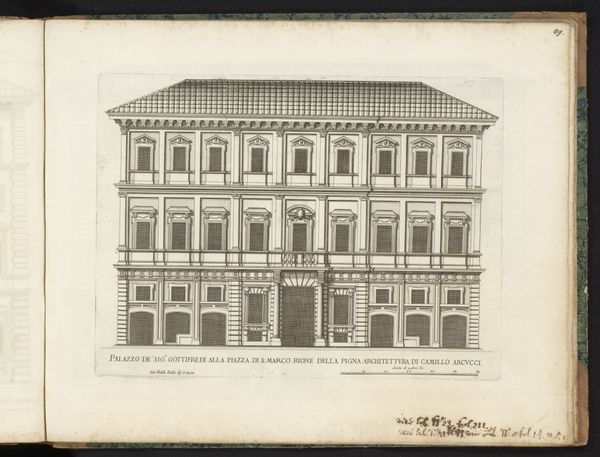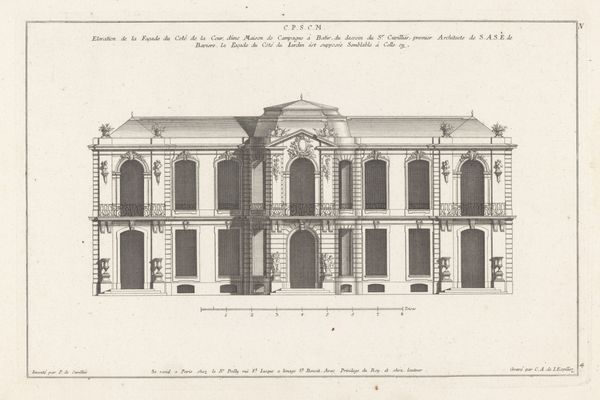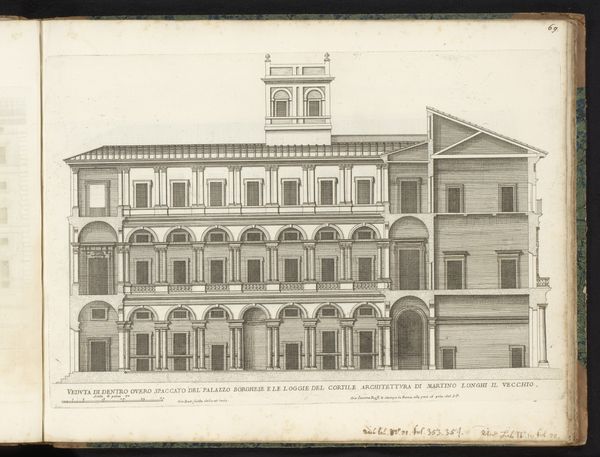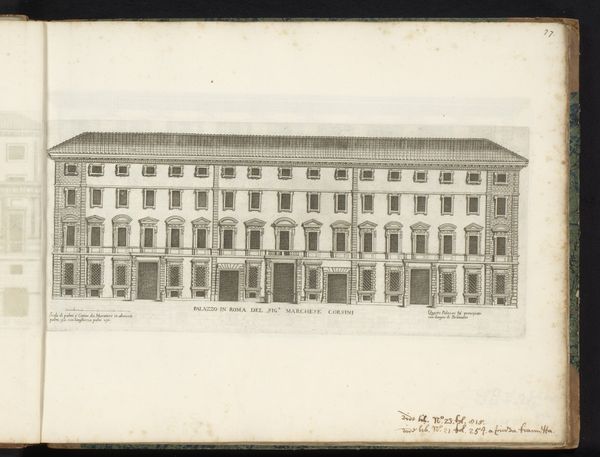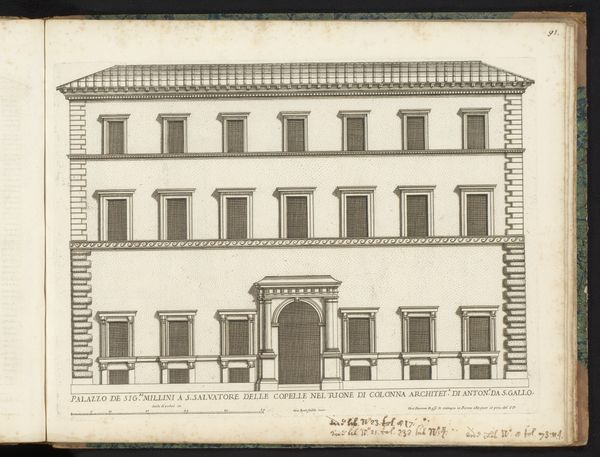
print, engraving, architecture
#
aged paper
#
toned paper
#
baroque
#
mechanical pen drawing
# print
#
old engraving style
#
cityscape
#
engraving
#
architecture
#
building
Dimensions: height 251 mm, width 420 mm
Copyright: Rijks Museum: Open Domain
Curator: This is "Façade van Villa Giulia," an engraving made after 1655 by Giovanni Battista Falda, now residing at the Rijksmuseum. Editor: My first thought is of clarity and precision; the clean lines against the toned paper give it a strong structural feel, almost like an architect's blueprint. Curator: It's more than just a blueprint. Falda’s engravings like this one served a crucial function. Prints were readily reproducible and shareable, creating a new economy that commodified architecture itself. These images helped circulate design ideas and influenced building projects far beyond Rome. Editor: Yes, but let’s not overlook the artistry here. The balance of light and shadow, the repetition of windows and the imposing centrality creates an elegant facade with a Baroque touch. It draws the eye. Curator: True, but consider also the societal implications. Who were these images produced for? They were tools used by architects, patrons, and builders alike in negotiating the construction of powerful status symbols. This engraving is not merely representation but a cultural object embedded within specific economic structures. Editor: Certainly the economic component played a key role. Still, the semiotics of that facade - the careful order, symmetry, the slightly ornamented windows all make a statement. Its very form communicates power and order through established design principles. Curator: Absolutely. I find myself thinking about the labor required to create it. The engraving would require skills to craft and sell these replications. That human element behind it should never be overlooked. Editor: An important point to acknowledge, yet for me, seeing it as a balanced architectural artwork in how proportion and geometric volumes interact. Curator: Ultimately, both the form of the villa depicted, and the function of Falda’s print played key roles in Baroque culture. Editor: Agreed. Bringing these points into discussion really emphasizes the power this architectural façade holds, even today.
Comments
No comments
Be the first to comment and join the conversation on the ultimate creative platform.
